Large Colour Wheel 1980
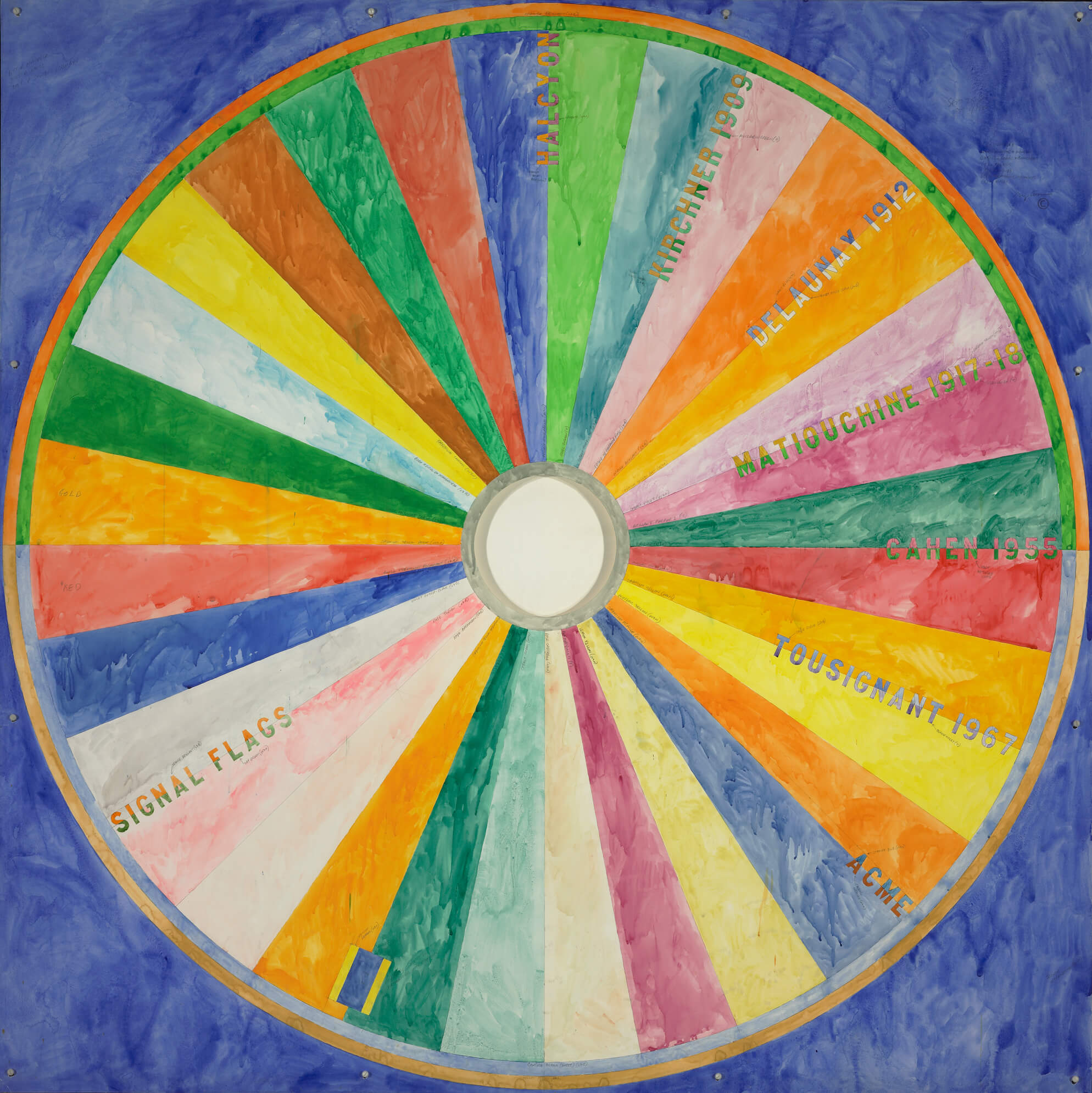
Greg Curnoe, Large Colour Wheel, 1980
Watercolour and graphite on paper, 189 x 189 cm
National Gallery of Canada, Ottawa
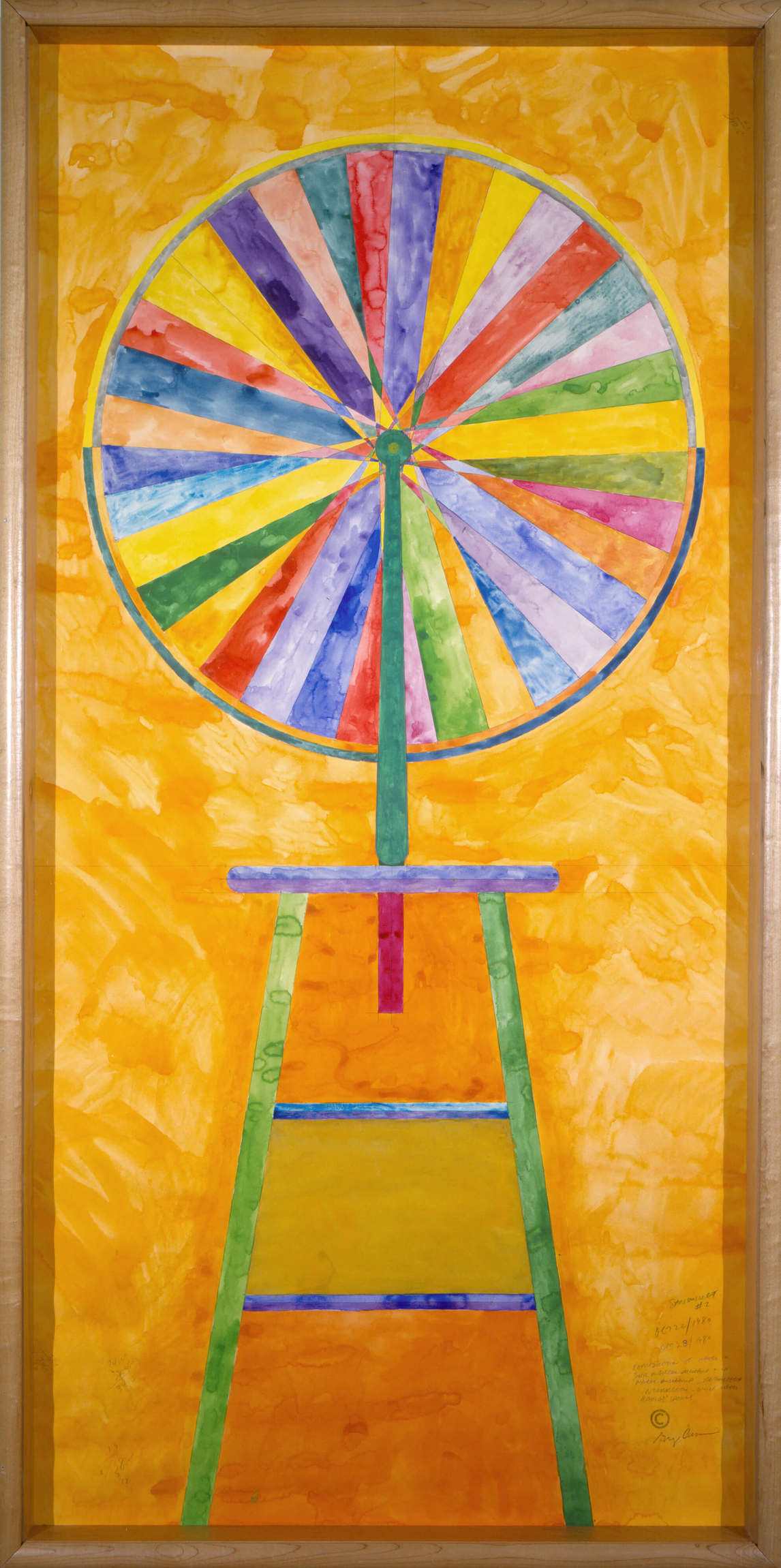
Greg Curnoe used circles in various ways throughout his career: as a monoprint (made by inking a long-playing record and pressing it on paper in 1962), as coloured shapes in many paintings, as wheels in his bicycle works of the 1970s, and later as colour wheels like this one. Large Colour Wheel clearly indicates the ideas behind Curnoe’s fame as a colourist. It is also representative of many works of this period that explored colour theory, including smaller watercolours of wheels, signal flags, and aircraft roundels.
In 1855, French chemist Michel Chevreul had developed a seventy-two-part colour wheel to describe what he called “simultaneous contrast,” the effect on perception of juxtaposed colours, especially complementary colours. One of the first artists to explore this idea was French artist Robert Delaunay (1885–1941). Curnoe had admired Delaunay since his days at H.B. Beal Technical and Commercial High School, in the mid-1950s, and he had seen exhibitions of the French artist’s work in 1965 and 1976. Curnoe had already acknowledged his debt to Delaunay in several works, such as #1 Iron, 1st Hole, Thames Valley Golf Course with Delaunay Sky, 1971–78.
With this work Curnoe pays tribute to his antecedents in the study of colour by naming them in chronological order with the date of a significant work: KIRCHNER 1909, DELAUNAY 1912, MATIOUCHINE 1917–18, CAHEN 1955, and TOUSIGNANT 1967. He liked to collect unusual words, and here are HALCYON (calm, peaceful) placed between green and blue, both colours associated with the word, and ACME (perfect) between the perfect complements, blue and orange. SIGNAL FLAGS refers to his series of maritime flags, which used colours that could be easily distinguished at sea. The flag here is in one of his favourite combinations, blue and yellow. The colour wheel itself is Curnoe’s own unscientific version, which plays with the juxtaposition of colours, sometimes complementary, sometimes not. A hole has been carefully cut in the centre of the wheel, so that one looks right through to the wall. Doing so, perhaps the artist intended to emphasize the work as a colour wheel rather than a bicycle wheel.
Immediately after finishing Large Colour Wheel, Curnoe began work on Sanouillet #2, 1980, which integrated his colour wheel with a bicycle wheel–truing stand, a favourite readymade of the Dada artist Marcel Duchamp (1887–1968). As French Dada scholar Michel Sanouillet noted, “Greg’s fascination with the wheel kept recurring.”

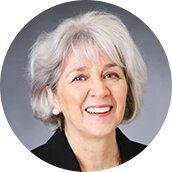 About the Author
About the Author
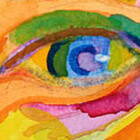 More Online Art Books
More Online Art Books
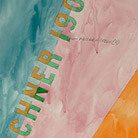 Acknowledgements
Acknowledgements